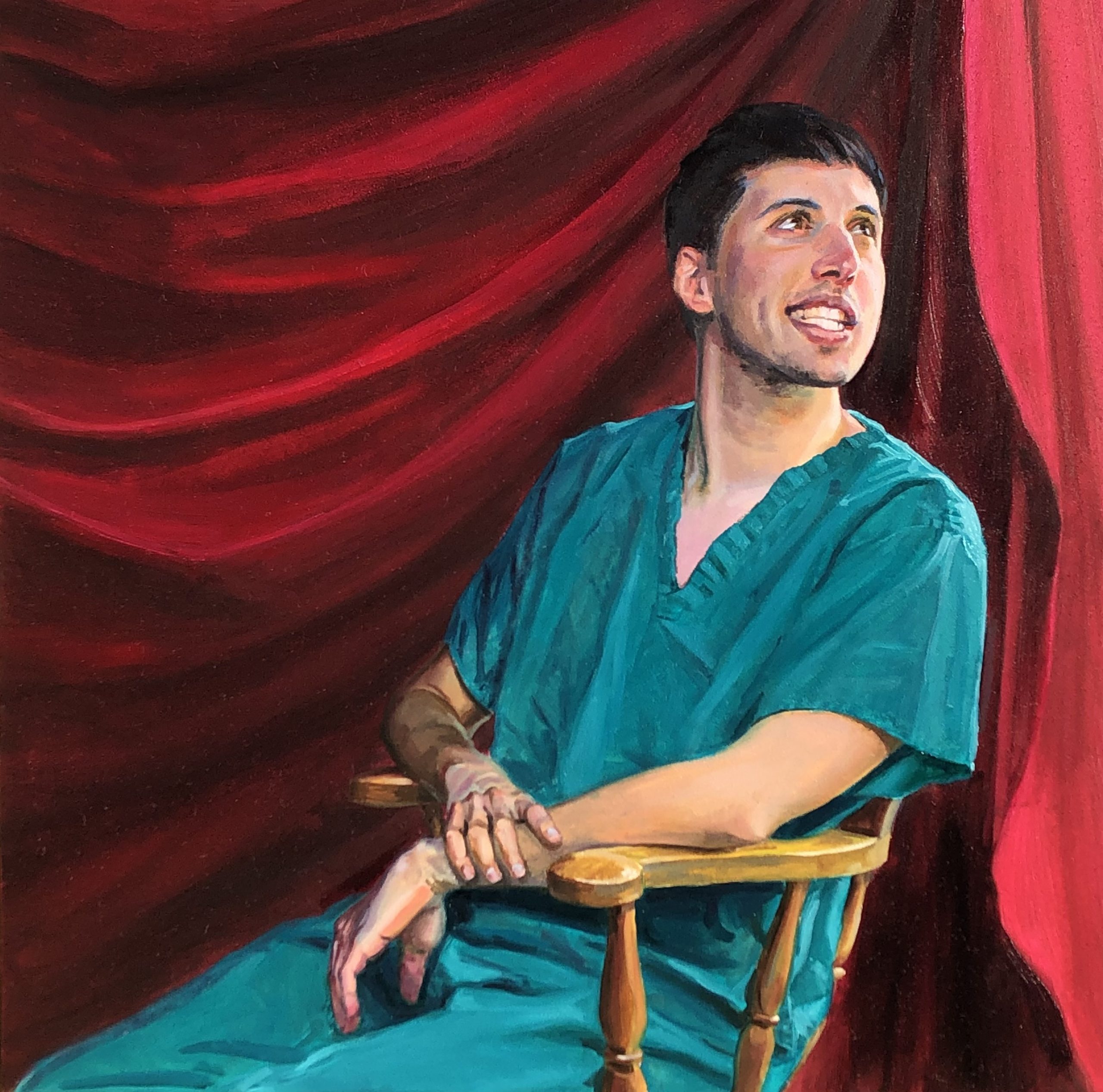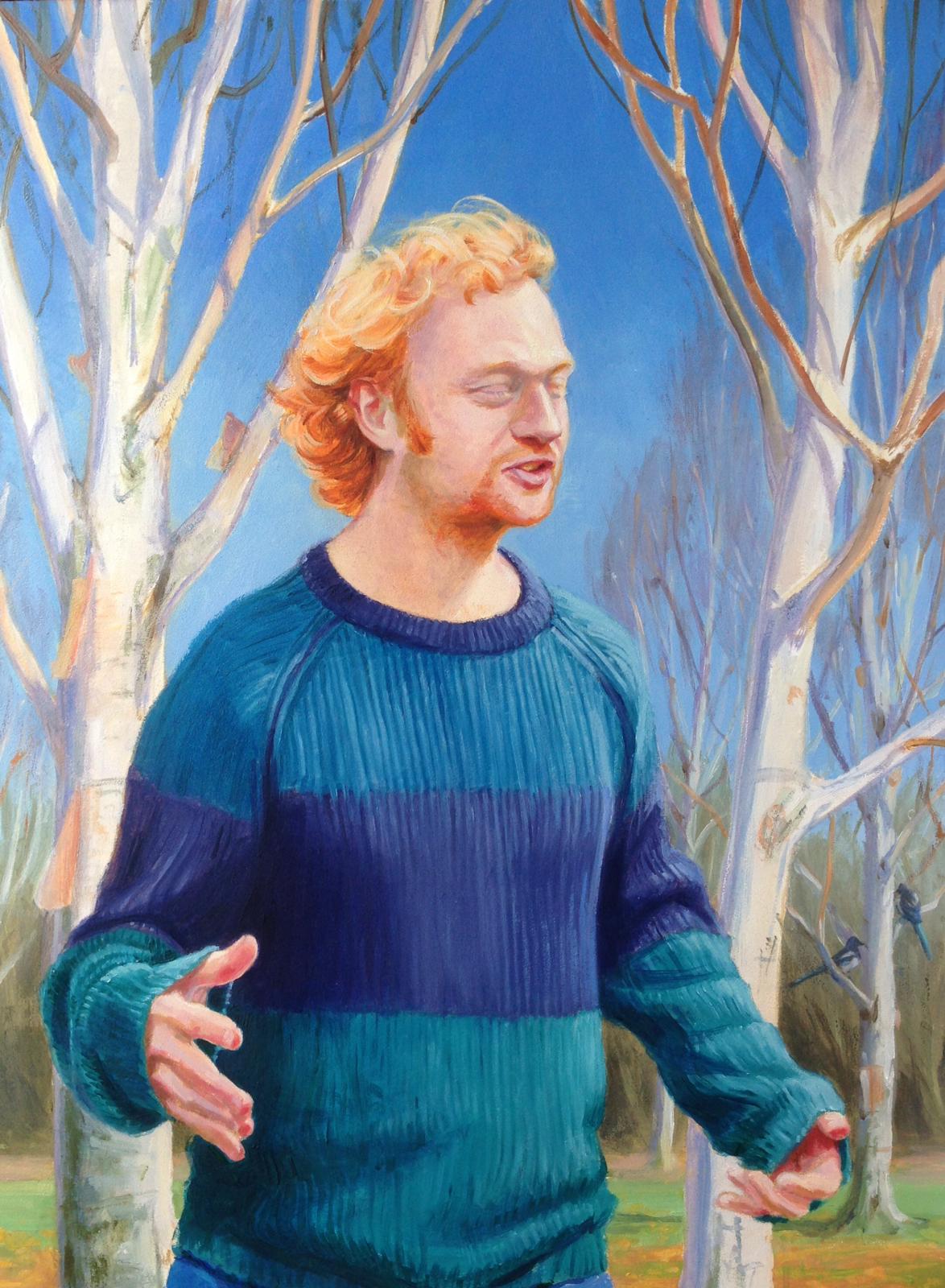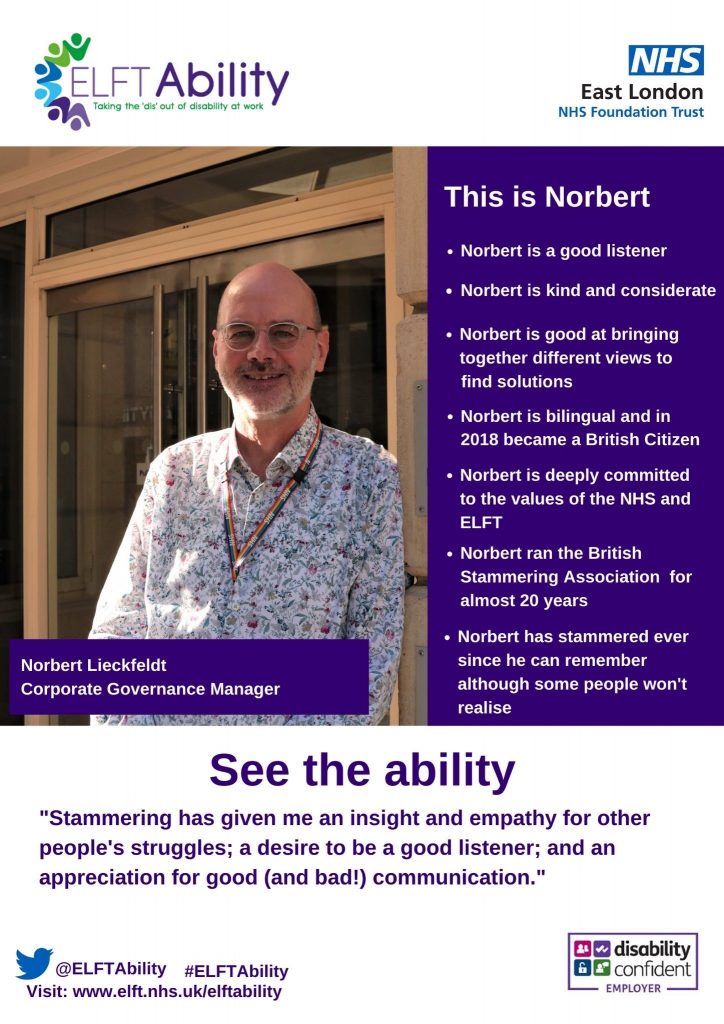- [email protected]
- Mon - Fri: 9:00 - 17:30
NHS voices
One of the core aims of the Network is to promote and showcase personal stories and positive role models of NHS staff who stammer from across the NHS workforce, and we are very keen to add as many ‘NHS voices’ to this website. If you would like to contribute to this by including a short video then please do get in touch, we would really like to hear from you.
Supporting you

Artist: Paul Aston @paulastonpainter on Instagram
“I have spent most of my life hiding my stammer, deeply ashamed of how I would be perceived by my peers if I were to block on some dreaded sound. This irrational and toxic fear was borne from a life seeing stammerers being portrayed in the most insensitive way possible on virtually every form of media I have ever watched. I cannot count the opportunities I turned down or denied myself; too many times I hid in silence instead of speaking my mind for fear of humiliating myself with this handicap. For too long I thought a competent doctor should not stammer.
But finally meeting other stammerers and realising there is a whole community campaigning for our stuttered voice to be heard made me realise that I have nothing to be ashamed of, nothing to apologise for. My stammer is a part of who I am, WHAT I say is more important than HOW I say it, and I will never allow it to silence me again.
This beautiful painting by my friend Paul shows me finally turning away from the darkness and facing the light, with a stammered word etched on my face but my gaze still turned forward and upwards, unashamed and uncowed. The hospital scrubs represent my new found pride in embracing myself as a doctor who stammers.”
Dr. Ramdeep Romann
junior clinical fellow in medicine at Addenbrooke's Hospital

Artist: Paul Aston @paulastonpainter on Instagram
“I wanted this portrait to tell my story of stammering. Stammerers do not always get the chance to tell own their story. We are typically type-cast into the role of tragedy, inspiration or clown depending on what seems to best fit the occasion. The gaze of fluent people often decides how we are seen and perceived. Here, I wanted stammerers to take control of the lens/paintbrush.
I chose the location. A local park I love with cute dogs. I tried to stammer on the letter ‘P’. The letter has been a source of anguish over many years as I introduced myself, but these days I try to see stammering as a part of myself, a part of my identity. ‘P-P-Patrick’. I chose a jumper that (in theory) I own but my girlfriend spends more time wearing than me. This reflects that stammering is a shared experience, sometimes an intimate one, with others.
In the background, you may notice a magpie or two sitting among the birch trees. I wanted my northern routes to be a part of the picture as well as my stammer. The magpie is Paul’s representation of this (the symbol of Newcastle United Football Club). The birch trees are Paul’s idea too. A pioneer species that often starts off a new woodland. Make of that what you will, apparently the original black pines of the park were too difficult to integrate into the portrait.
The scene for the portrait is designed by a stammerer; photographed and painted by stammerer; of a stammerer stammering. The stammered gaze.”
Dr Patrick Campbell
Cambridge University Hospitals NHS Foundation Trust

